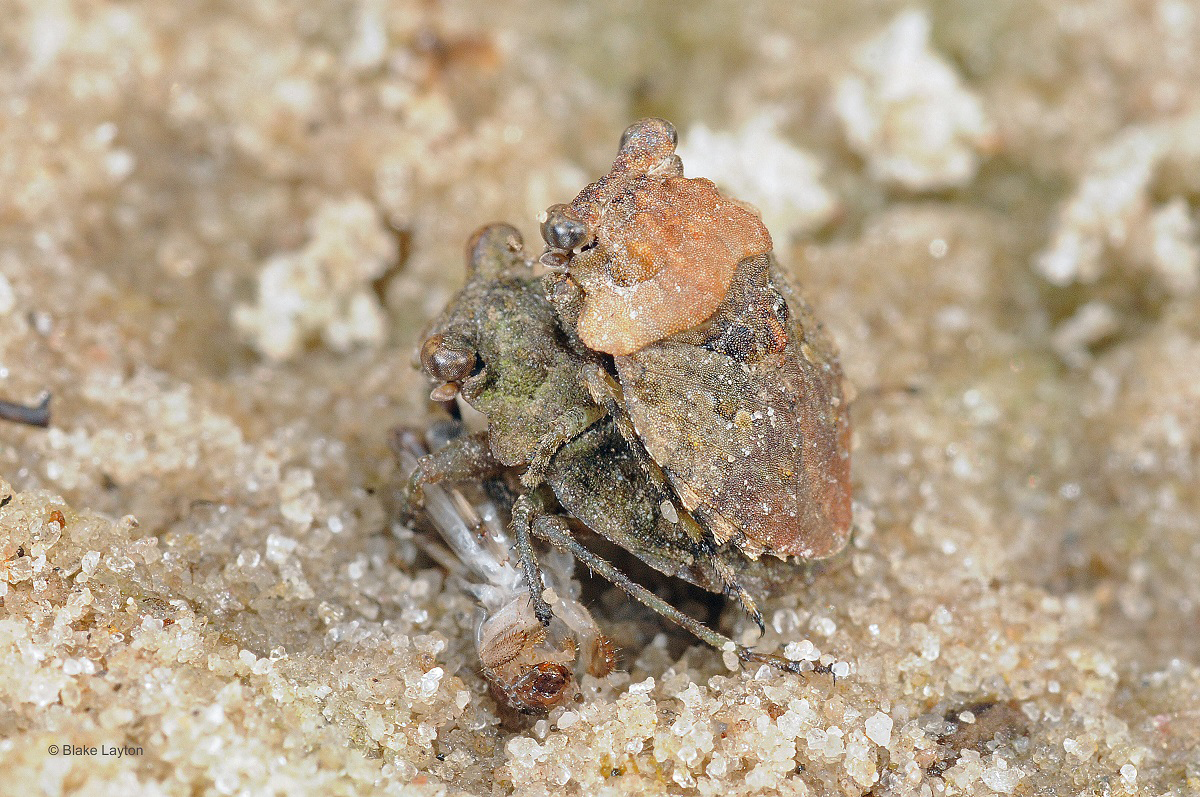Toad Bug, Vol. 6, No. 9

Gelastocoris oculatus
Order: Hemiptera
Family: Gelastocoridae
If you find yourself walking along the sandy edge of a river, lake or similar habitat this summer, keep an eye out for toad bugs. These little bugs really do look like tiny toads; they even hop like toads. Their camouflaged coloration makes them difficult to spot when they are resting on moist sandy soil, at least until they hop, and even after one attracts your attention by hopping, it can still be difficult to find the critter again once it is sitting still. You know it’s there, but that camouflage is so effective—ah, there it is! Immature toad bugs are even more difficult to spot because they cover themselves with grains of sand or soil.
Toad bugs belong to the same order as stink bugs, and they share many common traits with stink bugs. However, toad bugs are predators, and their front legs are specially adapted for catching insects and other small prey, a bit like the forelegs of preying mantids. The mating pair shown in this photo has captured an adult pygmy mole cricket. Pygmy mole crickets occur in similar habitats and are the ideal size for toad bug prey. Toad bugs are about ¼ inch long and hunt pygmy mole crickets and similar sized prey by stalking close, jumping and grabbing the prey with those raptorial front legs and feeding on it with their piercing-sucking mouthparts.
Of course, one sometimes sees young toads and frogs that are not much bigger than the toad bugs in these same habitats.
Blake Layton, Extension Entomology Specialist, Mississippi State University Extension Service.
The information given here is for educational purposes only. Always read and follow current label directions. Specific commercial products are mentioned as examples only and reference to specific products or trade names is made with the understanding that no discrimination is intended to other products that may also be suitable and appropriately labeled.
Mississippi State University is an equal opportunity institution.

